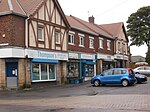Gateshead International Stadium

Gateshead International Stadium (GIS) is a multi-purpose, all-seater venue in Gateshead, Tyne and Wear, England. Originally known as the Gateshead Youth Stadium, the venue was built in 1955 at a cost of £30,000. It has since been extensively re-developed on three occasions. Its capacity of around 11,800 is the greatest in the Metropolitan Borough of Gateshead, the third-largest in Tyne and Wear (behind St James' Park and the Stadium of Light), and the sixth-largest in North East England.The main arena is principally used for athletics. The inaugural athletics competition at the redeveloped venue, the 1974 "Gateshead Games", was instigated by Brendan Foster, a Gateshead Council employee at that time. By breaking the world record in the men's 3,000 m, Foster brought international publicity to the new stadium and began a tradition of athletics competitions at the venue, which has since hosted the British Grand Prix (2003–10) and the European Team Championships in 1989, 2000 and 2013. It is the only venue to have hosted the latter event three times. Five world records have been set at the stadium, including two by pole vaulter Yelena Isinbayeva and a tied 100 metres record by Asafa Powell in 2006. Although the venue primarily caters for athletics, it is the current or former home to teams in several sports. It has been used by the town's main football club since 1973. Gateshead International Stadium was home to the Gateshead Thunder rugby league club during their spell in the Super League and the replacement Gateshead Thunder club played home games in the main arena, which was known as the Thunderdome when used by that team until the club relocated to Newcastle in 2015. Gateshead Harriers Athletic Club, which includes Foster and Jonathan Edwards among its life members, are the oldest tenants, having used the site since 1956. The stadium has also been used as a concert venue by numerous musical artists including Little Mix, Guns N' Roses, Bon Jovi, Bryan Adams and Tina Turner.
Excerpt from the Wikipedia article Gateshead International Stadium (License: CC BY-SA 3.0, Authors, Images).Gateshead International Stadium
Neilson Road,
Geographical coordinates (GPS) Address Phone number Website External links Nearby Places Show on map
Geographical coordinates (GPS)
| Latitude | Longitude |
|---|---|
| N 54.961111111111 ° | E -1.5797222222222 ° |
Address
Gateshead International Stadium
Neilson Road
NE10 0EF , Mount Pleasant
England, United Kingdom
Open on Google Maps









